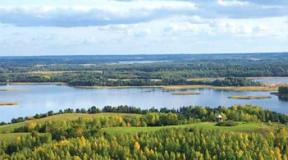Optimal temperature in the room. Comfortable temperature in the apartment
The temperature environment in which we live and work has fascinated scientists for centuries. Even among the monuments of ancient cultures, we find buildings built with care for the thermal comfort of its inhabitants. With the advent of the Industrial Revolution, researchers began to study the factors that influence the perception of temperature and how to measure them. However, despite the research of scientists, the problem thermal comfort continues to remain complex and not fully studied, although some things can be said definitely, for example, it has been established that for knowledge workers best temperature- 21 degrees.
Summer 2010 promises to be very hot middle lane Russia. In Moscow, the first ten days of July turned out to be abnormally hot. Perhaps the length of working hours should not be reduced (although it should be), but taking a long break in the middle of the working day (for example, from 12 to 16 hours) might be advisable.
SanPiN 2.2.4.548-96 Hygienic requirements to the microclimate production premises(1.10.1996 N 21) - Working hours at workplaces at air temperatures above normal: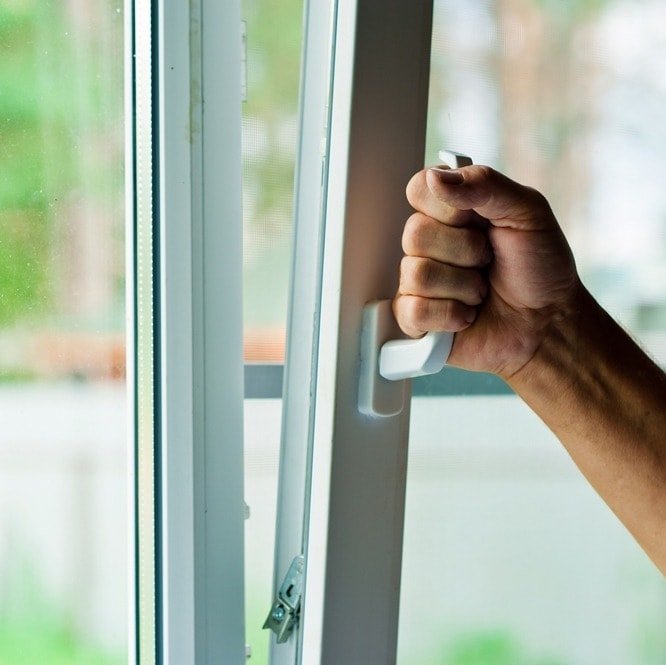
Factors influencing the perception of ambient temperature.
Air temperature. The easiest factor to measure.
Humidity. Heat is more difficult to bear when high humidity.
Radiated heat. Heat emitted by the sun, heaters, stoves. The human body and solid objects (furniture, equipment) heat up faster than air.
Air speed. Air movement promotes cooling.
Physical activity. The human body produces heat. As physical activity increases, heat production increases. At low air temperatures, physical activity helps to warm up; at high temperatures, on the contrary, it increases the feeling of heat.
Cloth. Being a barrier between the human body and external environment, clothing protects us from heat, prevents its loss or, conversely, promotes ventilation. Depending on the situation and clothing, we feel cold or warm.
Other factors. Age. Health status. Weight and body composition. Use of medications. Alcohol consumption.
How do these factors affect our feelings?.
All of the above factors interact to influence our sense of air temperature. Examples:
- High temperatures combined with high air speed/strong winds provide thermal comfort.
- Low temperature and high air speed cause a feeling of cold.
- High physical activity and low temperature contribute to thermal comfort.
- High physical activity and a large number of radiated heat creates a feeling of heat.
What is thermal comfort?
We can say that a person who feels thermal comfort does not think about whether he is cold or warm. An environment that is comfortable in terms of temperature is an ideal working environment. In addition to greater operational efficiency, the likelihood of making mistakes leading to serious consequences or an accident is reduced.
Thermal comfort is a subjective concept. What seems comfortable to one person may not suit another. Most people feel comfortable in the following conditions:
| Conditions | Values | |
| Summer | Winter | |
| Air temperature | 19-24 | 18-22 |
| Relative humidity | 40-70% | |
| Air speed | 0.1-0.2 m/s, without drafts | |
| Radiated Heat | No direct exposure to thermal radiation | |
| Cloth | Lightweight clothing | Winter clothes |
If any of these conditions are not met, there is a need to improve or maintain existing ones. For example, if there is no air movement, you need to lower the temperature.
Many industrial and office buildings fail to provide a comfortable temperature environment for their workers. The issue of thermal comfort in a building must be considered at the design stage.
How to make the temperature more comfortable?
Reducing the temperature using...
- Air conditioner . Many people think air conditioning the perfect way creating a comfortable atmosphere indoors, especially in summer.
- Ventilation. Ventilating indoor air helps eliminate bacteria and pollutants.
- Ventilation of the room .
Raising the temperature with...
- Heaters . Heaters are the most easy way increase the air temperature.
Increase in air humidity.
Often the humidity level in rooms is below a comfortable level for humans, especially during heating season. To increase the level of humidity, there are special devices - humidifiers. Ventilation also helps achieve normal humidity levels.
Increase/decrease air speed
In hot weather, increasing the speed of air movement using fans creates a feeling of coolness. Conversely, eliminating drafts and reducing air movement helps retain heat.
Physical activity monitoring.
In summer, try to minimize physical activity during the hottest hours of the day, moving work to the morning or evening.
Optimal choice clothes.
Try to dress appropriately for the weather.
According to SNiP standards, the room temperature different categories buildings consists of indoor air temperature and the temperature of the internal surfaces of enclosing structures. For residential, industrial and administrative buildings this is the temperature for inner surface walls and ceilings.
Building Codes and The rules govern the difference between indoor air temperature and indoor surface temperature. For what?
If the difference is significant, then in a situation where the air is warm and the walls are cold, water vapor will condense on the inner surface of the walls. Simply put, condensation will form.
Condensation on the interior walls of a room will lead to a decrease in the comfort of the people in it and to damage to the finishing materials on the walls and ceilings.
To avoid such a situation when the temperature of the surfaces of the room is too low and the air temperature in the room is too high, the difference between these indicators is normalized.
The delta for these indicators will be different for different types buildings. The standards are given in an excerpt from the text of SNiP below.
The table, which indicates the normalized temperature difference between the air temperature in the room and the temperature of the surfaces of the room, is accompanied by a formula by which this indicator is calculated.
Text SNiP " Thermal protection buildings" clause 5.9. “Limiting moisture condensation on indoor walls” (document text):



We look at the text of the document, the table and comment.
So, the difference between the temperature of the internal air and the temperature of the internal surfaces of the walls for residential premises should not exceed 4 degrees Celsius. If the air in the living room is +22C, then the temperature of the inner wall should not be lower than +18C. Otherwise, conditions are created for condensation to form inside the room.
How do we get the situation when the air in the room is warm and interior walls cold? Very simple. If there is insufficient heat, the only way for the consumer not to freeze is to heat his boiler or stove at maximum mode.
The heat generator produces the maximum amount of heat into the air or coolant, which in turn goes to radiators or heated floors. Radiators and heated floors also heat the air in the room.
However, heat loss through the walls is such that warm air in the room is not able to heat the inner surface of the walls to the required Tsten = Air + 4C. As they say in this case, the stove is hot and the walls are ice. The same can apply to the floor or ceiling.
And this is the most direct way to cause water vapor to condense on the inner surfaces of walls, floors and ceilings.
In the case where the walls are sufficiently insulated, but the ceiling or floor is not, condensation occurs on the floor or ceiling, since the walls become excluded from this process.
Even if you don't have to spend too much indoors, insufficiently insulated walls still cause the air in the room to cool faster.
The only way out of the situation is to insulate the enclosing structures from the outside. In this case, the walls, floor and ceiling will have a difference on the internal surfaces with the air temperature inside the room within the framework of SNiP standards “Thermal protection of buildings”.
The temperature difference is calculated using the formula that you see after the table. The coefficient n shows how the walls and ceilings are located in relation to the street.
Table 6 with coefficients n for different options locations:
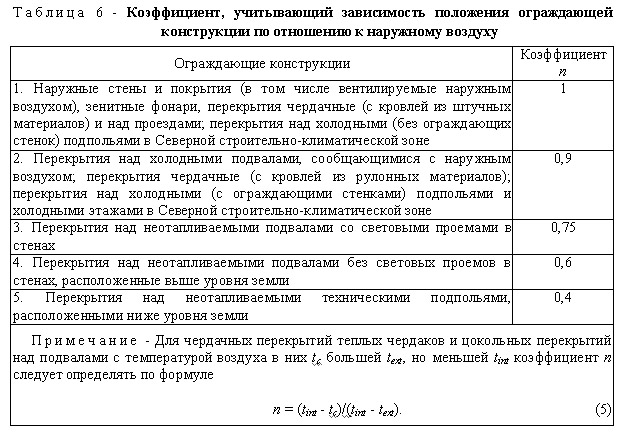
And also A - heat transfer from the inner surface of walls and ceilings. You can see this indicator in Table 7, which is presented below.
Table 7 Heat transfer from the internal surface of walls and ceilings:
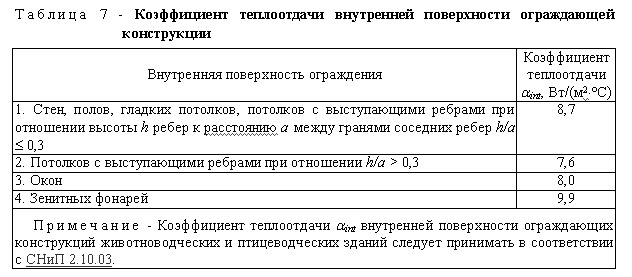
Thus, we have all the indicators that allow us to calculate the temperature difference for a specific situation when the air temperature in the room can be much higher than the temperature of the surfaces of the room.
Child psychologist
Room temperature and humidity – the most important parameters environment that provides comfort, full functioning of a newborn child and even his health.
Mothers, knowing this, try to create ideal conditions for your beloved baby. First of all, parents are afraid of hypothermia, so they do everything possible to prevent the child from freezing - they install heaters in the bedroom, put several diapers and onesies on him.
However, efforts to “warm” a child often end in overheating of the child’s body, which can sometimes cause more harm than hypothermia. That is why it is necessary to understand what air parameters will allow the baby to develop optimally.
As evidenced by the analysis of pediatric sources, the optimal temperature parameters for the room in which a newborn baby is located are in the range of 18-20 oC. In this case, all biochemical processes in the child’s body will proceed completely naturally, without any disruptions.
Teledoctor E.O. Komarovsky is convinced that the higher the temperature in the nursery, the worse it is for the child. Overheating of children is no less, and even significantly more dangerous, than hypothermia. This is extremely important for every parent to remember.
To control the air parameters in the room, the thermometer should be placed next to the newborn’s cradle, and the hygrometer (a device that determines the humidity in the room) should be placed away from all heating devices.
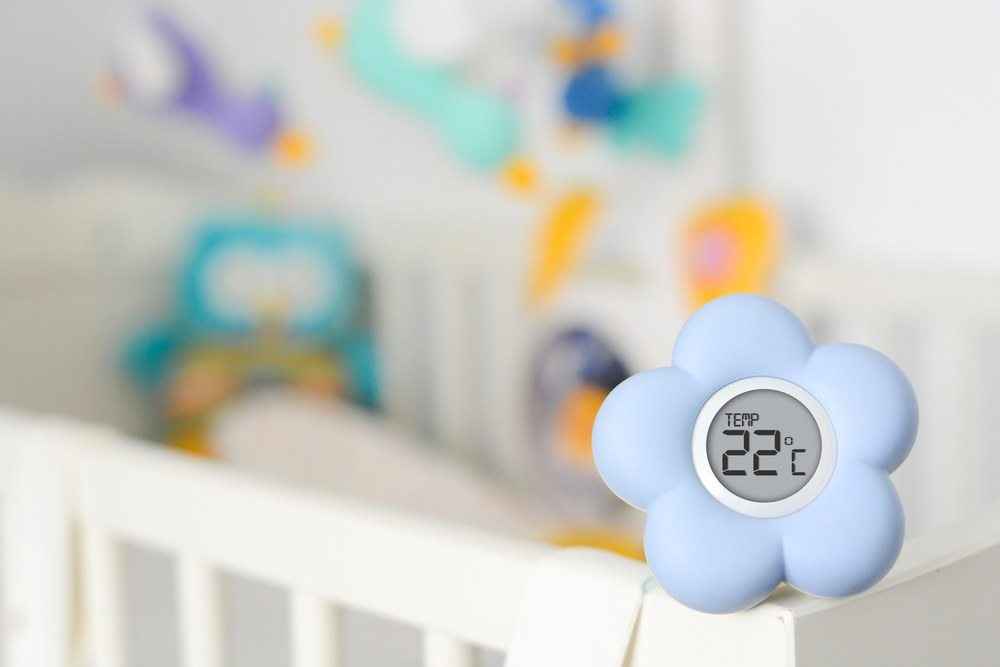
Despite the existing recommended air levels in the apartment, parents should, first of all, focus on the child’s well-being. That is, the temperature in the room should “like” the baby and should correspond to the characteristics of his body.
If indoors temperature regime is within normal limits, but the child’s lower and upper extremities become cold; socks and additional clothing should be worn. If the newborn sweats and turns red, he should be unwrapped.
For an infant who was born ahead of schedule, it is necessary to create special conditions due to insufficient thermoregulatory processes. Therefore, the temperature in the room with a premature newborn will be above 20 °C.
Air humidity
Humidity room air– another important environmental indicator for a newborn. The air exhaled by a child is characterized by 100% humidity and high temperature. If the environment is too dry, the child's body spends fluid to humidify the air, which leads to rapid loss of moisture.
A comfortable humidity level that should be in a house with a newborn baby is 50-70%. Approximately this level is observed in the off-season with regular ventilation and central heating turned off.
But since the body of each newborn is individual, to understand whether the humidity level corresponds to optimal values, you should focus on the baby’s health and well-being.
Favorable signs are:
- good dream;
- normal body temperature;
- natural skin color;
- absence of rash and other irritations;
- dryness and warmth of the extremities;
- uniform breathing.
It should be understood that in winter, during the period of increased battery operation, the air in the apartment is not humid enough. Measurements using a hygrometer show that the indicators are reduced several times.
Danger of hypothermia and overheating
A newborn baby sleeps about 20 hours a day, the rest of the time he either eats or participates in activities. organizational issues arranged by parents. Naturally, he is not able to dress or undress on his own.
His metabolism runs at a higher rate than that of mom or dad. At the same time, thermoregulation has not yet been set up and adjusted, which is why it is so important to know what temperature should be in the children's room in order to avoid overheating and freezing of the child.
Knowing about the imperfection of thermoregulation, adults are afraid to “freeze” a newborn baby. Hence the constant wrapping in warm clothes and the use of numerous diapers. At the same time, parents forget that overheating poses a particular danger to the child’s body.
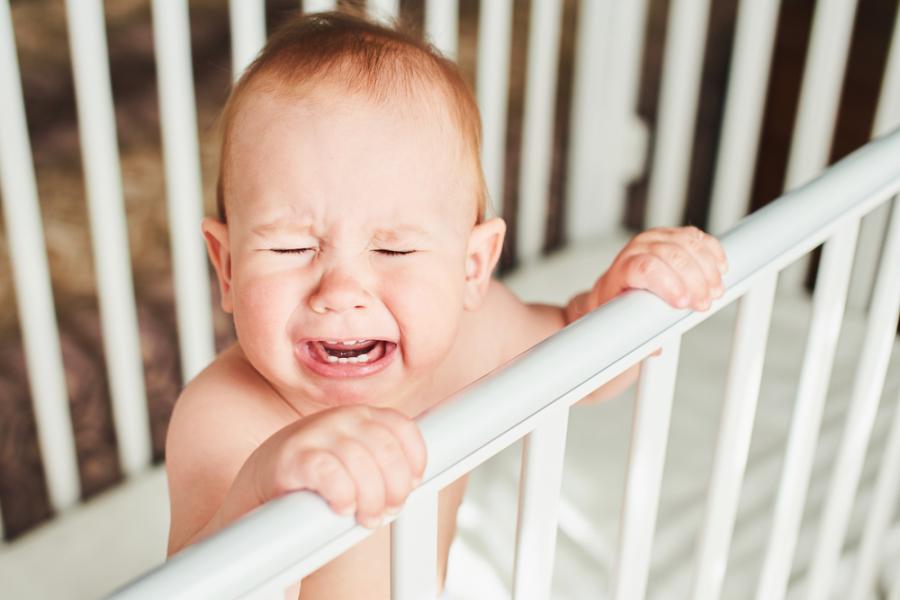
The metabolism of a newborn is quite active, accompanied by the release of a large amount of heat. The child’s body needs to “reset” this heat. This process is carried out using two ways:
- through the lungs;
- through skin(sweat evaporates).
In the first case, the air that is inhaled by the child, passing through the lungs, begins to heat up to body temperature. In this case, a certain amount of heat will be lost.
The cooler the room, the higher the heat loss. If the temperature regime is excessively higher than normal, then the heat generation begins to decrease significantly. Consequently, overheating of the still imperfect organism may occur.
If the first method of temperature regulation is not possible, the newborn activates the second way - through the skin. That is, the child sweats, excess heat is released, but at the same time there is a loss of moisture and salts.
Thus, elevated temperature and humidity in the room can lead to dehydration of the child’s body, which can lead to a deterioration in overall health.
The main signs of overheating are:
- excessive moisture of the skin;
- diaper rash;
- insomnia;
- sweat rash;
- painful sensations in the tummy, bloating;
- thrush in the mouth;
- decreased appetite;
- difficulty breathing through the nose;
- decreased heart rate;
- retraction of the fontanel.
The most severe negative consequences that threaten the life of a child are considered to be a jump in the child’s temperature, discharge of blood from the nasal cavity, and rolling back of the pupils. With such symptoms, you should urgently call an ambulance.
Overheating awaits a baby not only at home, but also on the street. Try not to walk with your newborn in the heat; go for a walk only in the early morning and late evening. Also avoid direct rays of light, which often provoke sunstroke.
A child can become hypothermic not only at low temperatures in the apartment, but also in case of overwork or insufficient nutrition. The baby also freezes in cool water or wet clothes.
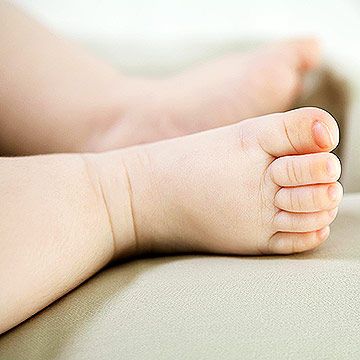 Signs of hypothermia in a newborn are:
Signs of hypothermia in a newborn are:
- pale skin;
- cold extremities;
- shiver;
- hiccup;
- cold sweat;
- slow movements of arms and legs;
- rapid breathing.
In extreme cases, the nasolabial triangle may turn blue and even faint. To avoid negative consequences, it is urgent to stabilize the child’s body temperature.
Otherwise, the development of such undesirable and even dangerous for children’s health is possible. states like:
- general exhaustion of the child’s body;
- colds (in case of chronic hypothermia, pneumonia is possible);
- brain damage;
- changes in the cardiovascular system;
- frostbite of the arms or legs.
Parents should immediately begin raising their body temperature. First of all, it is worth checking whether the newborn baby is wet or sweaty. If suspicions are confirmed, the baby needs to be changed into dry underwear and wrapped well.
Danger of low humidity levels
A reduced level of moisture in the room leads to sharp dust in the air, an increase in the number of pathogens and allergens. The most common result of dehydration is various negative states:
- Asthma. When the body becomes dehydrated, areas of the lungs can be damaged, resulting in chronic inflammation of the respiratory system.
- Allergic diseases. If there is a lack of moisture in the body, the level of histamines in the circulatory system increases. An allergy occurs, which can manifest itself as a rash, rhinitis, and itching sensations.
- Dry skin. Dehydration damages the upper layers of the skin, resulting in dry patches on the child's body.
- Dry mouth and nose. Dry out due to low humidity Airways. Dry crusts form in the nasal cavity, and the child begins to cough.
- Blood thickening. The volume of fluid decreases, the blood begins to thicken, which is extremely dangerous for the entire child’s body.
Thus, for infant It is extremely important to be in a room with an optimal level of humidity. This is not just a whim, but the most important condition for normal child development. Be sure to remember this!
Ideal temperature and humidity: creating optimal conditions
Comfortable humidity and air temperature in the room of a small newborn must be created correctly, focusing on the season. So, in summer period To regulate air parameters, you can install an air conditioner. It is only important not to direct cold streams directly to the baby's crib.
The temperature both in the children's room and in the room for adults depends on the beginning of the heating season. If it has not yet arrived, and the house is cold, parents are advised to purchase a heater. IN winter period It is extremely difficult to follow the standards, since the premises become excessively hot and dry out.
In order for temperature standards to come into order, experts advise adhering to certain recommendations, which should be discussed in more detail.
 Fresh air is extremely beneficial for any child, so it is necessary to ventilate the room every four hours.
Fresh air is extremely beneficial for any child, so it is necessary to ventilate the room every four hours.
Particularly important optimal humidity and temperature for sleep, otherwise it will be impossible to rock the baby normally and put him to sleep.
When ventilating the nursery, the newborn must be taken to another room.
This helps not only to optimize temperature and humidity, but also to saturate the room with oxygen. Another option is to go for a walk with your child.
Closing the battery
If radiators central heating are too hot, and it is impossible to reduce the heating level, it is recommended to cover them with special wooden or plastic shields. You can also hang a thick cloth over the batteries.
Getting rid of canopies
A canopy crib is a very cute and aesthetically attractive structure. However beautiful curtains can limit the child’s access to oxygen, which leads to an increase in body temperature. To ensure free flow of air, it is best to get rid of the canopy or remove it while the child sleeps.
Carpets are a known dust collector and should be avoided too. In addition, it is worth getting rid of excess furniture, since clutter also disrupts the normal air circulation in the room.
Choosing the right clothes
It is important for a child to choose the right clothes and bed linen. It is important to stop wearing synthetic products for newborns. The skin in them does not breathe, therefore, the thermal regulation of the baby’s body is disrupted. It’s better to avoid wearing a hat altogether.
In addition, you should not wrap your baby up if the room is hot, and expose him if the room is cold. room temperature. Well, things made from natural fabrics will help create optimal conditions for restful sleep and active wakefulness.
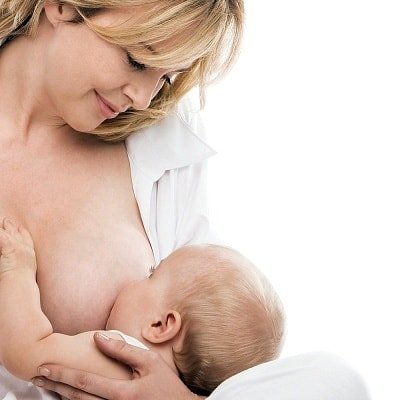 If your newborn baby is too hot, shortening the interval between meals may help.
If your newborn baby is too hot, shortening the interval between meals may help.
It is known that breast milk contains 80% water, which means that breastfeeding quenches thirst and optimizes fluid levels in the body.
If your baby is fed formula, you can supplement him with water using a bottle between meals.
It is important to ensure that the liquid is at room temperature.
Washing
In summer it is extremely difficult to provide optimal conditions; the child is hot and dry. In this case, you need to bathe the baby up to three times a day, but not for the purpose of cleanliness, but to improve well-being. Naturally, use detergents not necessary.
Increase in humidity
As already noted, humidified air is no less important for a newborn than optimal temperature conditions. Create comfortable conditions possible using technical devices or improvised means.
Specialists advise:
- install a special air humidifier;
- carry out more often wet cleaning premises;
- place containers with water, fountains near the child or batteries;
- spray water using “sprinklers”;
- cover radiators with damp towels or sheets.
Air temperature in a newborn baby’s room – important condition well-being, health and emotional state. Do not forget to monitor the state of the environment, and the baby will develop without any problems, to the delight of the parents.
Hello, I am Nadezhda Plotnikova. Having successfully completed her studies at SUSU as a specialized psychologist, she devoted several years to working with children with developmental problems and consulting parents on issues of raising children. I use the experience gained, among other things, in creating articles of a psychological nature. Of course, I in no way claim to be the ultimate truth, but I hope that my articles will help dear readers deal with any difficulties.
Comfortable temperature indoor air depends on the sensations of a particular person. In addition, it is directly related to his subjective assessment and susceptibility to environmental conditions.
There is no such concept as a comfortable temperature in any regulatory documentation. It is not in the technical vocabulary either. There is only a so-called quantity optimal temperature air, which was determined through numerous physiological experiments.
Concept differences
The air temperature in the room should be at such a level as to provide the most comfortable conditions for the people staying there. But what should this value be? It is extremely difficult to answer this question, because each person is individual. And if some of us are comfortable even in the heat, then others do not close the windows even on frosty days.
However, scientists have come to the conclusion that certain preferences are a criterion only for the concept of a comfortable temperature regime. But there are also standards determined as a result of research. The obtained values take into account many factors, among which are the needs of the average human body. Such values indicate the optimal temperature and may vary depending on certain conditions.
Consider standard indicators indoors is very important. After all, according to scientists, any overheating or hypothermia will certainly affect his general health. That is why the optimal indoor air temperature values are not advisory in nature. They are enshrined in official legislative acts- SanPiNakh, which reflect the requirements of sanitary standards.
What affects indoor air temperature?
Of course, first of all this external factors, which depend on the time of year and the climate zone in which the house is located. But, in addition, the air temperature in the room is directly related to the characteristics of each room. Let's take a closer look at these factors.
Subtleties of climate
Indoor temperature standards vary depending on the area. They are different in the northern and southern, as well as in the western and eastern regions. The normal temperature in an apartment or industrial premises depends on factors such as air humidity, its temperature and Atmosphere pressure, measured outside the walls of the building.
There are differences in the microclimate in houses and depending on the change of season. Thus, in winter the indoor temperature is lower than in summer. For example, for the climate of the European continent during cold periods of the year, the average optimal indoor air temperature is 22 degrees. In the hot season, its values increase by three degrees.
Human factor
Temperature conditions in the apartment should ensure maximum comfort for the people living in it. However, as mentioned above, such sensations are strictly individual. People of different genders and ages perceive the same temperature differently.
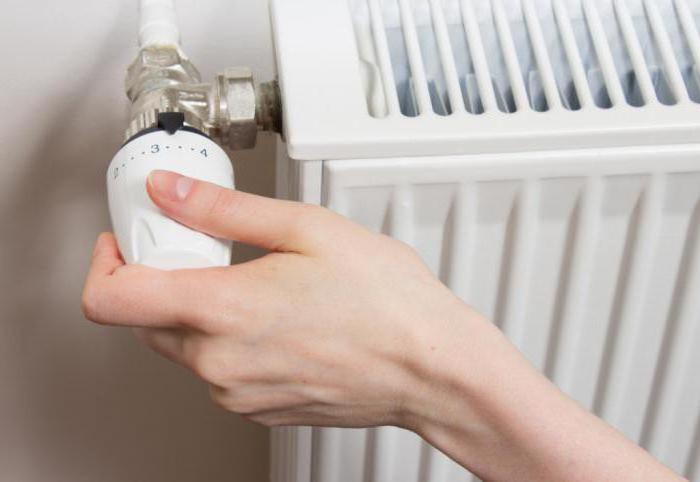
For example, women are more thermophilic than men. But newborn children do not have the ability to naturally regulate temperature and can quickly overheat or freeze.
Room temperature
Microclimate various rooms varies depending on their purpose. Let's consider the temperature conditions in the rooms of a residential building or apartment:
- Rooms for sleeping and resting. Here the optimal air temperature should be around 18 degrees. It is in such conditions that a person gets rid of poor health and insomnia.
- Bathroom. In this room, the air temperature should not be below 25 degrees. This is due to the humid microclimate of the room and its purpose. At low temperatures there is an immediate feeling of dampness and discomfort.
- Kitchen. This room gets a lot of use. household appliances emitting heat. This is an electric kettle and a microwave oven, an oven and hob. In this regard, high temperature in the kitchen will be inappropriate.
- Comfort in living rooms and other rooms will be ensured by temperature conditions ranging from 19 to 21 degrees.
However, here you need to adhere to one thing important rule. According to him, the temperature regime in the apartment should not have large differences. Ideally, when moving from one room to another, the differences in the thermometer readings should not be more than 2 degrees.
Human well-being
Despite personal preferences, the normal temperature in the apartment must still be observed. This issue becomes especially relevant in cold winters and hot summers. It is during this period that significant differences can be observed between the air temperature in the house and outside. If temperature conditions are not observed, then such a microclimate will lead either to overheating or to And this, in turn, is fraught with the appearance of cardiac problems.
The effect of overheating on health
If an overly hot atmosphere is created in the room, this provokes the spread of bacteria harmful to the body. Therefore, it is not surprising that people in such a room experience infectious diseases. In addition, in hot conditions the body loses moisture.

This causes the blood to thicken, forcing the heart to work harder. heavy load. This condition is dangerous for those who suffer from cardiac problems. In addition, loss of moisture from the body leads to water and electrolyte imbalance.
Effect of hypothermia
A similar condition is possible if the temperature conditions in the apartment are not observed and the thermometer drops below 17 degrees. What happens to the human body in this case? It increases heat transfer, which causes hypothermia. This condition provokes pathologies nervous system and the emergence of acute respiratory diseases. Low temperatures are especially dangerous for young children. That is why maintaining the temperature regime is important if there are kids in the house.
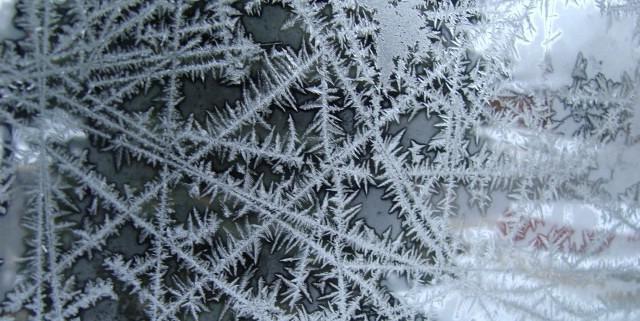
Sometimes it happens that a person is constantly freezing even in those microclimatic conditions that must be created in accordance with sanitary and hygienic requirements. This is worth thinking about seriously. Perhaps the discomfort is caused by a simple habit of high temperature. In this case, you need to be patient and adjust to the normal feeling of lower numbers. But there are some nuances here too. A constant feeling of cold is sometimes a consequence of problems with blood vessels, heart or hormonal levels. And this necessitates contacting a specialist.
Requirements for kindergarten premises
Microclimate in children's rooms preschool institutions must be created in strict accordance with legal norms. The temperature regime in kindergartens should not depend on the wishes of the administration or parents of children. Moreover, all the indications contained in SanPiN were developed on the basis of numerous scientific research and are designed to ensure minimal morbidity in children.
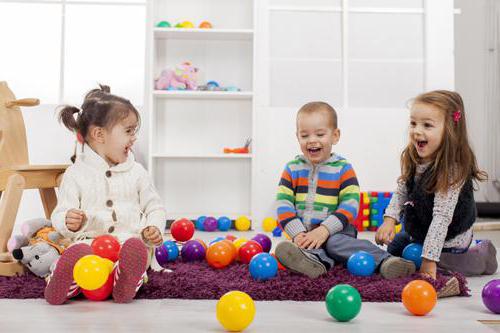
So, according to this document, the optimal temperature game room should be between 21 and 24 degrees. Moreover, the upper values of this indicator should be maintained for nursery groups or for those areas that are in a cold climate zone. For children's bedrooms, the optimal temperature is slightly lower. It is within 18-21 degrees.
Requirements for school premises
The optimal temperature in this educational institution is necessary to preserve the health of children. Moreover, the microclimate indicators in the school are directly dependent on the purpose of the premises. Thus, the thermometer can be at around 18 to 24 degrees in the library and foyer, dining room and assembly hall, in classrooms, as well as in small rooms where he spends with children individual lesson psychologist or speech therapist.
It should be a little colder in the workshops. In these rooms, where children are engaged in physical labor, the thermometer should be at around 17-20 degrees. The same norm exists for the gym. If the school has showers, they should warm up to 22-25 degrees. But in medical offices and sports locker rooms, the thermometer may be at lower levels. Their required value according to standards ranges from 20 to 22 degrees.

The temperature at school is allowed to be reduced during the holidays. During this period, when children do not attend school, the air here can be heated to 15 degrees.
Requirements for work premises
Production workshops or office rooms is the key to maintaining the health of employees. In addition, the optimal temperature regime in the room where this or that work is performed is clearly regulated by law. But it is worth keeping in mind that the standards provide different indicators. What do they depend on? There are only three of them, and the differences between them lie in the intensity of the work performed.
First category
The optimal operating temperature in such rooms is within 21-28 degrees. These are the facilities where employees perform their job responsibilities in a sitting position and have minor physical exercise. Such premises include watchmaking and clothing production, as well as workshops of automobile and instrument manufacturing enterprises. The intensity of energy consumption of workers producing such products does not exceed 139 W. In the category under consideration, a separate subgroup is distinguished. It includes industries where employees expend more energy (up to 174 W) when performing work. Optimal modes temperatures for such production are limits starting at 20 degrees.
Second category
The industries allocated to this group require high energy consumption from their workers (up to 232 W). IN in this case it is assumed that the employee is in a sitting position, but at the same time moves various loads, weighing up to 1 kg. The optimal temperature regime for such production is from 18 to 27 degrees. If an employee moves loads up to 10 kg during such work, then his energy consumption will be 290 W. In this case, the lower limit standard values The temperature can be reduced to 16 degrees.
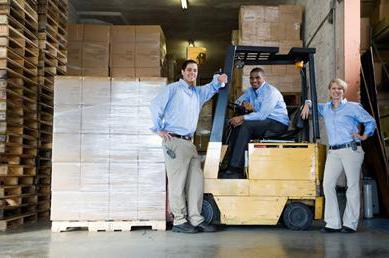
Similar conditions are created in the premises of rolling, thermal, mechanized and forging industries, as well as in the workplaces of personnel servicing conveyors, assembly shops and lines.
Third category
In some industries, a worker’s energy consumption exceeds 290 W. In such cases, we are talking about the third category of premises, which are the most demanding on the microclimate created in them. This is due to the fact that the personnel involved in production process, you have to make great physical efforts, walk and move weights weighing over 10 kg. The most favorable temperature conditions for this category of premises are temperature values from 15 to 26 degrees. As a rule, these are workshops or workshops where manual operations of metal processing and preparation are carried out building structures etc.
Compliance with sanitary and hygienic standards
In order for the requirements for establishing a beneficial microclimate to be met, it is necessary to keep a temperature log. It should contain readings from special instruments used in offices and production environments. The frequency of such measurements depends on the continuity of work processes and the characteristics of sanitary and hygienic facilities. As a rule, such events are carried out three times during a work shift.
If the required temperature regime is not observed, a number of measures will need to be taken to eliminate the causes that led to this. These may include work on thermal insulation of the room, as well as heating and ventilation. If it is impossible to carry out such activities, separate room a rest room should be organized, the microclimate of which will be comfortable for the staff.
Coziness and Comfort are subjective assessments of a person’s feelings from the perception of the environment.
The concept of “comfortable” temperature is so broad that it does not exist in technical vocabulary and regulatory documentation. The term “optimal” air temperature is used here. Big difference.
- The value of “comfortable” air temperature is a subjective assessment of the acceptability of environmental conditions, which is determined solely by human sensations
- The value of the “optimal” air temperature is determined on the basis of complex physiological calculations. The value of this value depends on many factors and takes into account the needs of the average human body. Each value of the “optimal” temperature for various conditions– supported by many years of research and observations. All information on the “optimal” air temperature is legislative nature and is recorded in the requirements of sanitary standards - SanPiN
SanPiN
SanPiN– Sanitary Rules and Norms
(not to be confused with SNiP - Construction Norms and Rules)
SanPiN-s – the general name of the collection of Russian sanitary standards.
Just from the name alone it is clear that this is sanitary regulatory documentation that defines sanitary and hygienic standards for all spheres of human existence and life.
SanPiN-s(along with GOST, OST, SNiP, etc.) have the status of medical technical legislative documentation, mandatory for execution. Failure to comply with SanPiN requirements is punishable by law.
In the case of determining the optimal air temperature, the most interesting are the Sanitary Rules, which establish optimal and maximum temperature ranges for work, residential and children's premises.
- working area
SanPiN 2.2.4.548-96 “Hygienic requirements for the microclimate of industrial premises.” A similar document can be found in Ukraine, it is called DSN 3.3.6.042-99 “Sanitary standards for the microclimate of industrial premises”
- Determining the optimal temperature for residential premises
SanPiN 2.1.2.1002-00 “Sanitary and epidemiological requirements for residential buildings and premises”
- Determining the optimal temperature for preschool organizations
SanPiN 2.4.1.2660-10 “Sanitary and epidemiological requirements for the design, content and organization of work in preschool organizations”
Optimal temperature for work areas
The optimal temperature in the workplace is established administratively, according to SanPiN 2.2.4.548-96 “Hygienic requirements for the microclimate of industrial premises”
The air temperature for work areas must ensure that heat balance working man with environment and maintaining the optimal or acceptable thermal state of the body. For this purpose, in the Sanitary Rules, all types of work are divided into categories according to energy consumption. At the same time, for each category its own optimal temperature and its maximum deviations. And also, the time a person spends at the workplace is limited in case of non-compliance with the specified temperature range.
Characteristics of individual categories of work
According to SanPiN 2.2.4.548-96 All types of work are divided into five categories (depending on the intensity of labor). In this case, the amount of energy consumed by the employee’s body in kcal/h (W) is taken as the determining equivalent.
Optimal temperature in the workplace
Depending on the intensity of work, SanPiN 2.2.4.548-96 sets the following optimal temperature in the workroom:
(Excerpt from SanPiN 2.2.4.548-96)
Optimal values of microclimate indicators in workplaces
production premises
Limiting temperature and time spent at the workplace
In addition to the optimal temperature in the workroom, SanPiN 2.2.4.548-96 sets maximum deviations for the air temperature in the workplace, and also imposes restrictions on the working time if it (temperature) is higher or lower than the maximum permissible. It is noteworthy that the temperature gradation above the permissible level (26°C) occurs every 0.5°C.
Optimal temperature for residential premises
The optimal temperature for residential premises is established in accordance with SanPiN 2.1.2.1002-00 “Sanitary and epidemiological requirements for residential buildings and premises”. Setting the optimal temperature in residential buildings and premises seems to be a simpler procedure, since in a residential area energy activity person is stable and minimal.
The air temperature for residential premises should ensure the preservation of the thermal balance of a person at rest and the maintenance of the optimal or permissible thermal state of the body.
(Excerpt from Appendix 1. SanPiN 2.1.2.1002-00)
Optimal and acceptable standards
temperature and relative humidity in residential premises
Optimal temperature for preschool organizations
The optimal temperature for the premises of preschool organizations is established in accordance with SanPiN 2.4.1.2660–10 “Sanitary and epidemiological requirements for the design, maintenance and organization of work in preschool organizations.” Setting the optimal temperature for the premises of preschool organizations seems to be the most important task, since children are the most susceptible to temperature changes.
The air temperature for the premises of preschool organizations should ensure the preservation of the child’s thermal balance with the environment and the maintenance of the optimal or acceptable thermal state of his body.
In contrast to the optimal temperature in working and living spaces,
the optimal air temperature in the premises of preschool organizations is set very strictly and has practically no intervals for maximum deviations
(Excerpt from Appendix 3 to SanPiN 2.4.1.2660–10)
Air temperature in main rooms
preschool educational institutions
Table continuation
Comfortable temperature 18°C?
As mentioned earlier, comfortable temperature in residential and domestic premises is not regulated by any national regulations or documents. The definition of the term "comfort" is not standardized. The amount of comfort cannot be measured in numbers and is of a distinctly individual nature.
Comfort is a comprehensive assessment of a person regarding the acceptability of his feelings from the perception of the environment
Alone, comfortable in felt boots, at -18°C,
and the second one is not comfortable in slippers, at +18°C
Sometimes, any value from the optimal temperature tables is taken as the value of a comfortable temperature, but this is not entirely correct. The most famous example This misconception is the famous value of 18°C, given by thermal generators as a comfortable temperature in the apartment.
At a temperature of 18°C it is comfortable, except for pets
In fact,
- 18°C is the lower limit for the temperature in the living room according to SanPiN 2.1.2.1002-00
- 18°C is the temperature at which the average person can be long time without outerwear and damage to health
Thus, it turns out that a temperature of 18°C has nothing to do with comfort. This is simply the lower limit of safe temperature for a living space.











